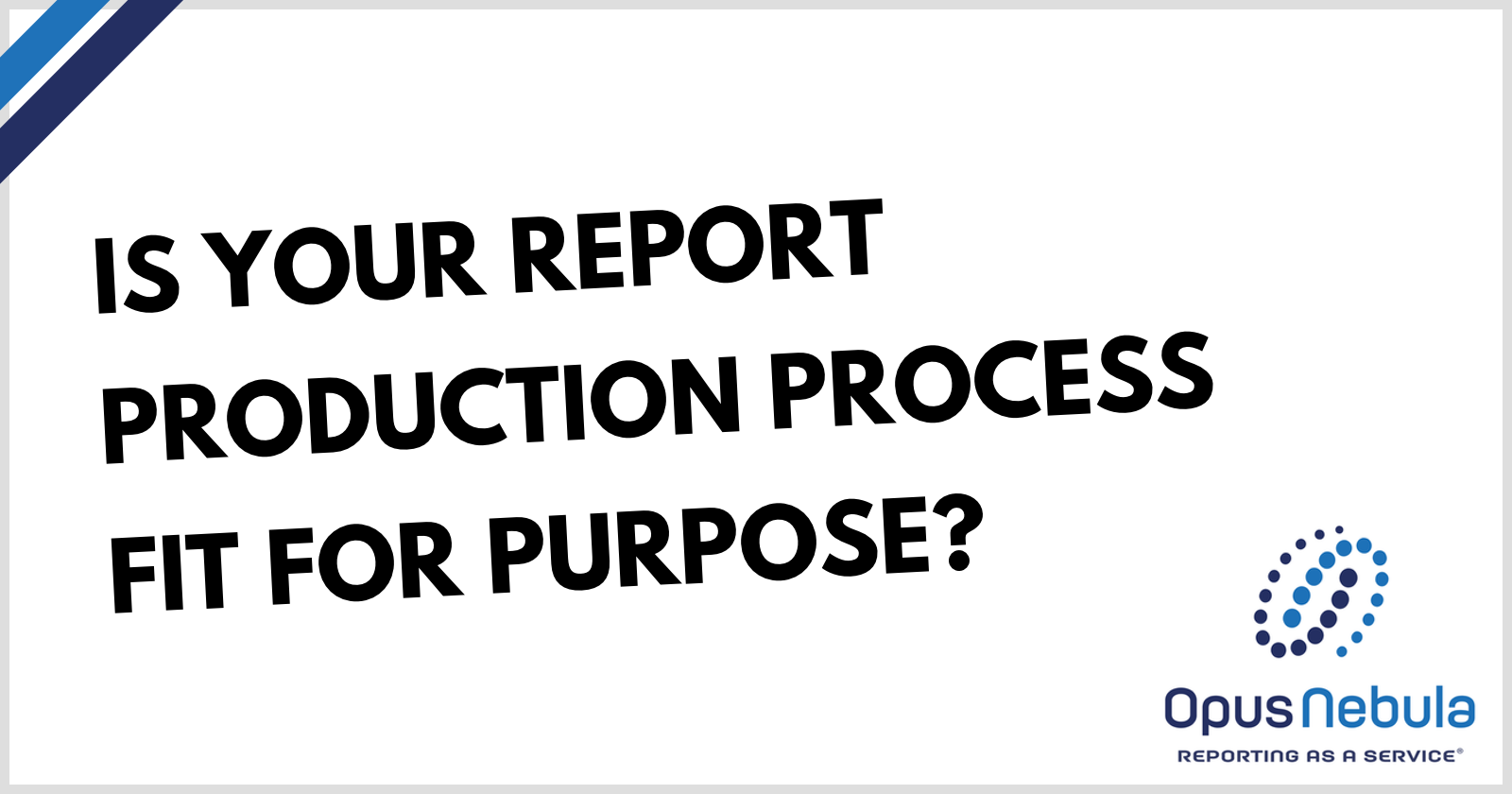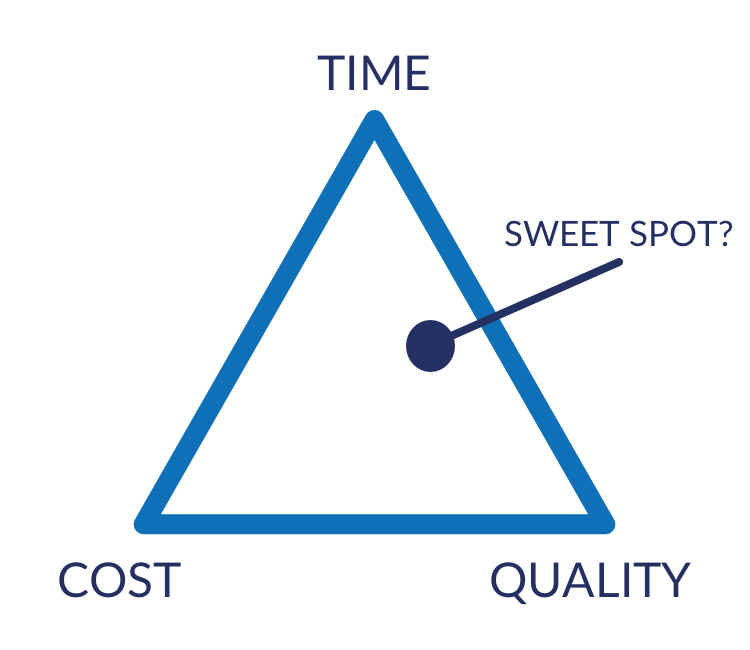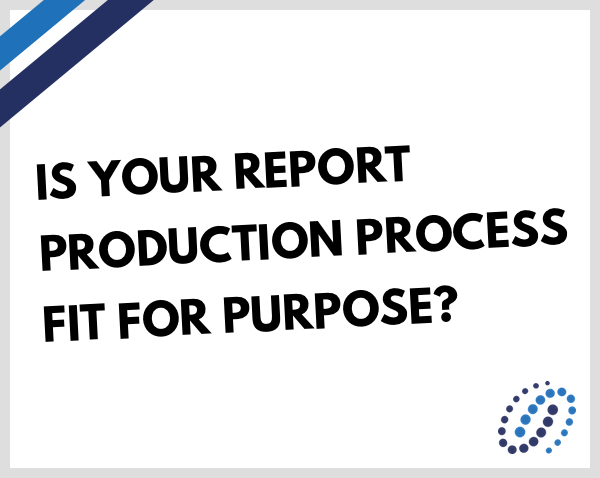In my last blog, I explained the importance of client interaction and how it’s directly linked to your reputation and feeds growth and profit. I also pointed out that in an industry such as investment management, where services are often intangible, any type of communication embodies the products themselves and therefore reporting in particular warrants focus and positioning at the heart of the organisation. You can read that blog here.

Following on from that, this entry considers how to ensure a report production process is fit for purpose and in doing so, have it protect and enhance your reputation. But before we examine that, let’s briefly consider and categorise the main types of reports that investment managers produce in a bid to focus attention on those that matter most in this regard.
Here’s a table that lists and profiles the main types as we see them:

Due to their attributes, you can see similarities in some of the reports that allow us to group them (those shaded yellow above). The complexity of production plus the combination of text, data and graphics, forces most firms to use dedicated software for such production, either on-premise or via a cloud-based system, such as ours.
Investment reporting, fund factsheets and information documents are primary client touch-points and due to their content – a mix of text, data and graphics, with ample opportunity for commentary – they are best suited to double-up as a marketing tool. However, to make sure they can be used in such a way, you need to establish an efficient production process as otherwise, the added administrative burden and cost may ultimately cancel out most, if not all of the gains you make through your marketing efforts.
Investment reporting, fund factsheets and information documents are primary client touch-points
What constitutes an efficient production process?
Sometimes, efficiency is confused with speed, i.e. the quicker something is, the more efficient it is. A dictionary definition for efficiency states “maximum productivity with minimum wasted effort or expense” but I think of it a little more than that. To me, efficiency is about finding the sweet spot between Speed, Quality and Cost.
You may have heard of the ‘golden’ or ‘iron’ triangle in project management, where a change in any one of these elements, has a relative effect on one or both of the other two. Well, we look at efficiency in a similar way. In designing a reporting production process, you have to decide on the importance of each of these elements. Is it quality you’re after? A quick turnaround? The cheapest method?

When it comes to the production process, initial focus should be on Time and Quality especially when they’re doubling-up as a marketing tool as we’ve discussed. Over time, cost of production is examined and begins to play a greater role, as we see more and more today – it’s one of the main reasons we get approached.
Let’s break that down a little.
For the production of such reports, quality is a complex issue as we’re not only referring to the overall ‘look and feel’ of the output. We’re referring to the report design, its content, its data and its production, so to ensure quality, we have to meet expectations in the following areas:
- Data Security – The data used in the reports and the reports themselves have to be stored securely and seen / accessed only by those entitled to do so.
- Compliance – Produced reports have to meet regulatory (and internal) requirements and the production process should too, i.e. a proper audit trail, checks and controls.
- Branding – All produced reports should apply consistent branding principles.
- Dynamic – The production process should easily be able to handle size changes in datasets, text fields and commentary.
- Amendment – The process should accommodate data and content updates during production and also easily facilitate changes to layout when necessary.
- Scale – The process shouldn’t be adversely affected by scale. It should be able to deliver all the output you need now and, in the future, without drawing on additional human resource to do so.
- Flexibility – Your production process has to allow for the addition of new elements in a report, new ways of presenting information, new reports without causing delay or internal resource issues.
- Accuracy – All of the content in the report has to be accurate. No mistakes.
Time on the other hand, is pretty simple. As an investment report focusses on a specific time period, there is an amount of time after the end of that period that is required to produce the report. The aim, of course, is to make this time period as short as possible and subsequently increase the relevance of the report. So, the challenge is to have your report production process cover all of those 8 points above and also produce your finalised output in an acceptable timeframe. Once you can do that, you’re pretty close to it being fit for purpose.
But we haven’t looked at the cost of ticking those boxes yet. You need dedicated staff and software, time from contributors across the organisation, compliance sign off, IT Support, development costs, hardware… all of which need to be considered as part of the cost of production.
Whatever that cost is, it needs to be palatable to the organisation to prevent ongoing discussion about cost reduction, which will only detract from the on-going production process and potential for improvement. Also, when you consider the output as marketing, although difficult to quantify, the ROI may warrant significant expenditure on the process when clients are being retained, at least partly as a result.
However, there is always pressure on cost. It’s unavoidable. We’d argue that to be truly fit for purpose, you need to meet all 8 points, deliver the output quickly AND do so for the lowest possible cost. Achieving that requires different thinking and a different business model.
A cloud-based report production process is probably the answer…
To find out more about Opus Nebula and how we help firms like yours deliver on all 8 points above and reduce your current costs, visit our website at www.opus-nebula.com and contact us personally or via [email protected] to arrange a meeting and see a live demonstration.
Andrew Sherlock
Opus Nebula

